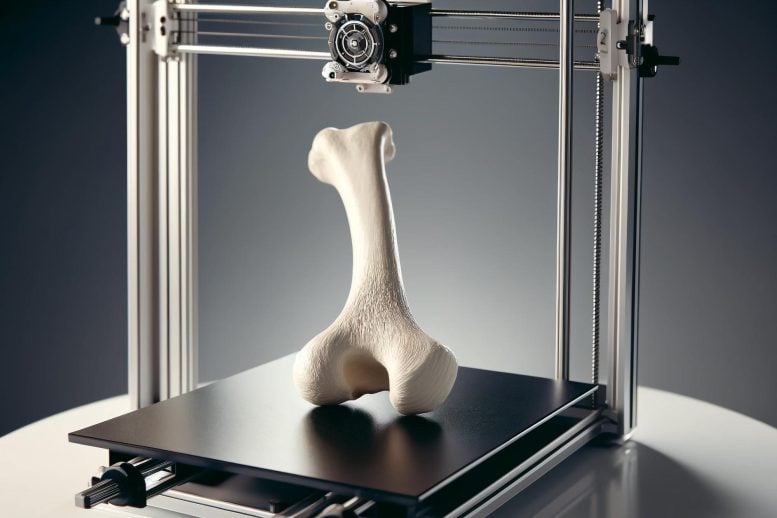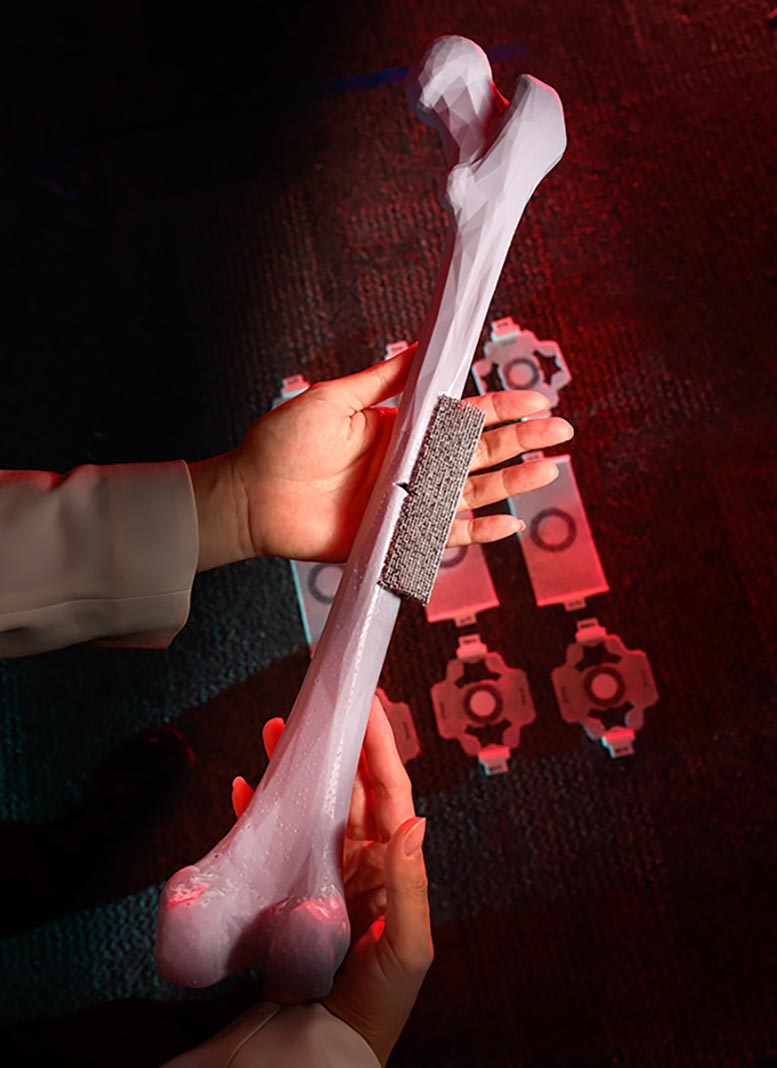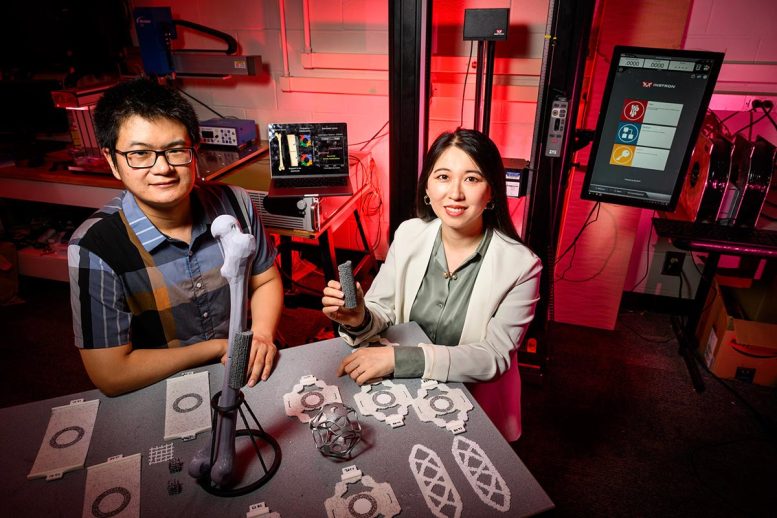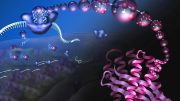
New synthetic material mimics human bone for better fracture repairs, utilizing machine learning and 3D printing. (Artist’s concept.) Credit: SciTechDaily
Researchers have developed a bone-like synthetic material using machine learning and 3D printing, aimed at enhancing orthopedic treatments. This new material could potentially replace traditional surgical methods, reducing complications and improving healing.
Despite their irregular architectures, natural materials like bones and bird feathers have an extremely efficient approach to physical stress distribution. However, the exact relationship between stress modulation and their structures has long eluded scientists. In a recent study, researchers have used machine learning, optimization, 3D printing, and stress experiments to develop a material that replicates the functionalities of human bone for orthopedic femur restoration, revealing insights into this complex relationship.

University of Illinois Urbana-Champaign researchers show their 3D-printed resin prototype of the new bio-inspired material, here attached to a synthetic model of a fractured human femur. Credit: Fred Zwicky
Challenges in Femur Fracture Repairs
Fractures of the femur, the long bone in the upper leg, are a widespread injury in humans and are prevalent among elderly individuals. The broken edges cause stress to concentrate at the crack tip, increasing the chances that the fracture will lengthen. Conventional methods of repairing a fractured femur typically involve surgical procedures to attach a metal plate around the fracture with screws, which may cause loosening, chronic pain, and further injury.

Graduate student Yingqi Jia, left, and professor Shelly Zhang used machine learning and 3D printing to fabricate a new bio-inspired material that may improve conventional methods for healing broken bones. Credit: Fred Zwicky
Innovative Approaches in Orthopedic Repair
The research was led by Shelly Zhang, a professor of civil and environmental engineering at the University of Illinois Urbana-Champaign, along with graduate student Yingqi Jia and Professor Ke Liu from Peking University. Their work, published in Nature Communications, introduces an innovative approach to orthopedic repair that uses a fully controllable computational framework to produce a material that mimics bone.
“We started with materials database and used a virtual growth stimulator and machine learning algorithms to generate a virtual material, then learn the relationship between its structure and physical properties,” Zhang said. “What separates this work from past studies is that we took things a step further by developing a computational optimization algorithm to maximize both the architecture and stress distribution we can control.”
In the lab, Zhang’s team used 3D printing to fabricate a full-scale resin prototype of the new bio-inspired material and attached it to a synthetic model of a fractured human femur.
Natural materials like bone, bird feathers, and wood have an intelligent approach to physical stress distribution, despite their irregular architectures. A new study that integrates machine learning, 3D printing, and stress experiments allowed engineers to gain insight into these natural wonders by developing a material that replicates the functionalities of human bone for orthopedic femur restoration.
“Having a tangible model allowed us to run real-world measurements, test its efficacy, and confirm that it is possible to grow a synthetic material in a way analogous to how biological systems are built,” Zhang said. “We envision this work helping to build materials that will stimulate bone repair by providing optimized support and protection from external forces.”
Zhang said this technique can be applied to various biological implants wherever stress manipulation is needed. “The method itself is quite general and can be applied to different types of materials such like metals, polymers — virtually any type of material,” she said. “The key is the geometry, local architecture, and the corresponding mechanical properties, making applications almost endless.”
Reference: “Modulate stress distribution with bio-inspired irregular architected materials towards optimal tissue support” by Yingqi Jia, Ke Liu and Xiaojia Shelly Zhang, 21 May 2024, Nature Communications.
DOI: 10.1038/s41467-024-47831-2
The David C. Crawford Faculty Scholar Award from the U. of I. supported this research.









Be the first to comment on "Synthetic Bones Designed by AI Set to Transform Orthopedic Surgery"